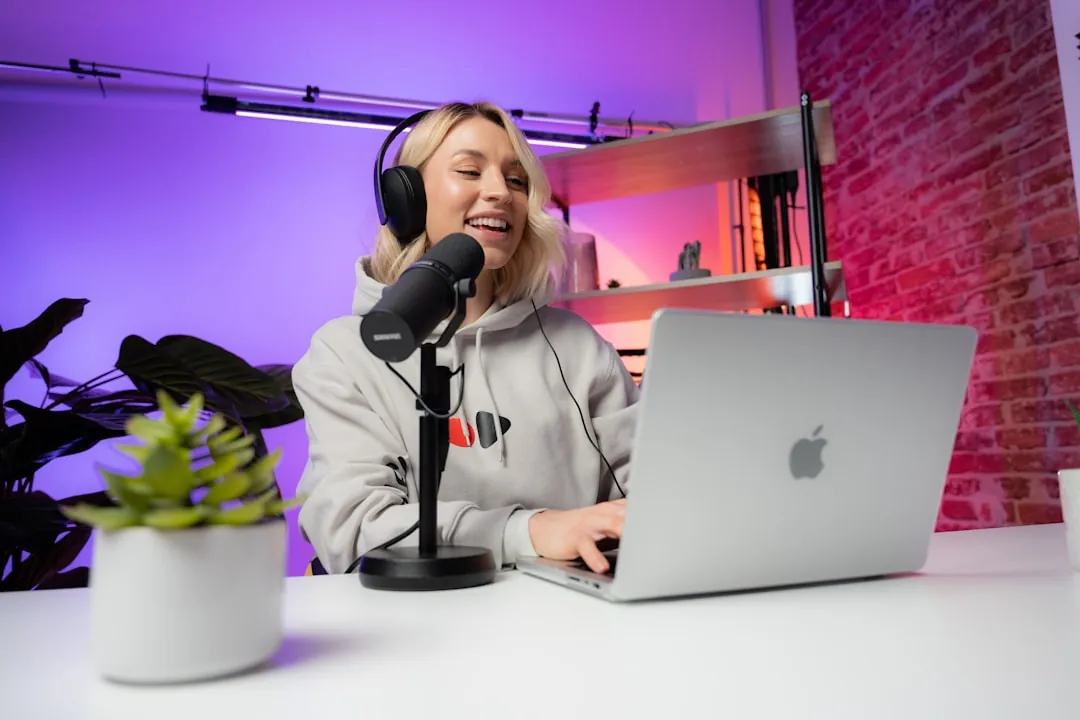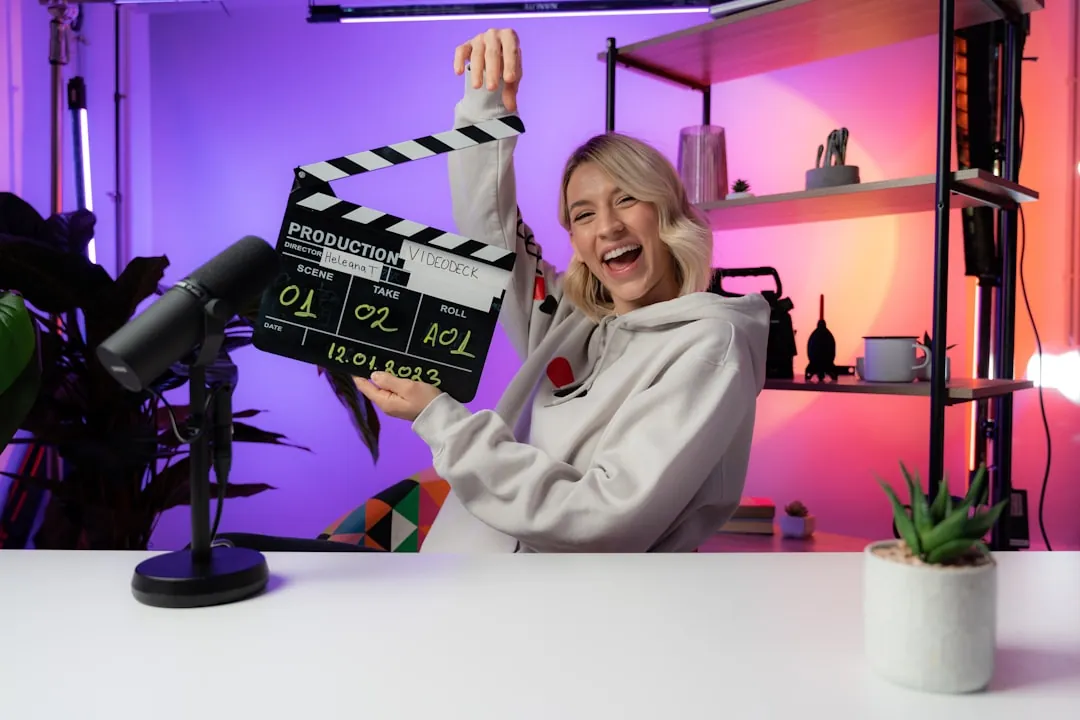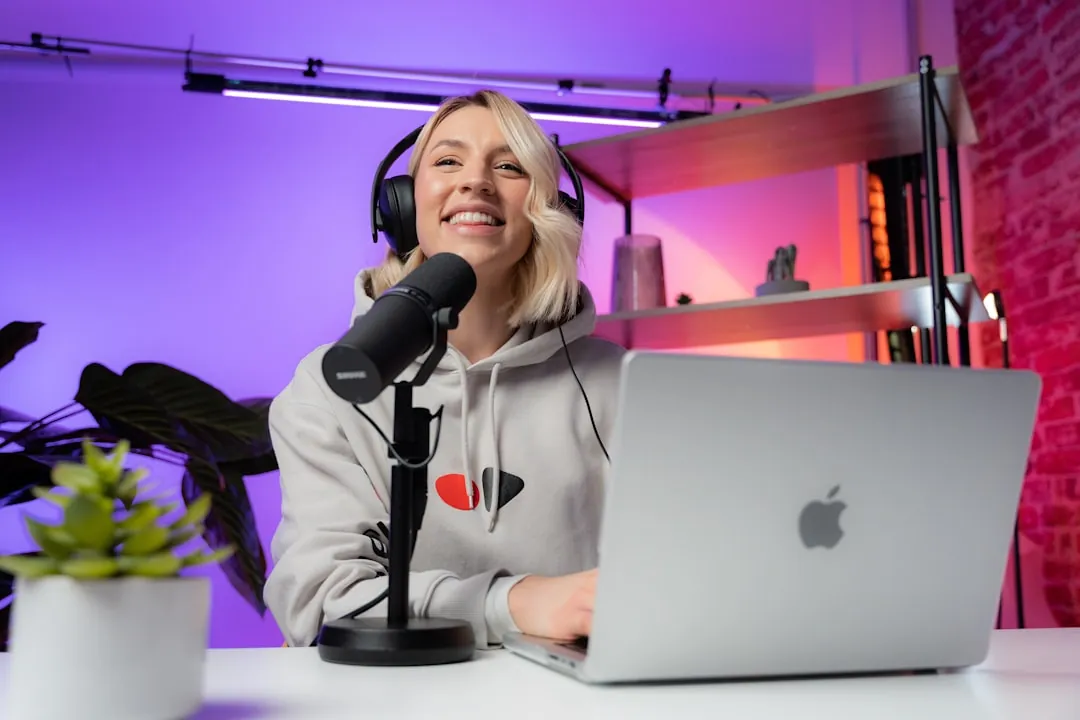So, you've got a YouTube channel. Maybe you're posting vlogs, gaming content, tutorials, or even just sharing your quirky personality with the world. That's awesome! But let's be honest, staring at that subscriber count and wondering why it's not climbing faster can be a real drag. I've been there. I remember when hitting 100 subscribers felt like climbing Mount Everest. Trust me, I get it.
The good news? Growing a YouTube channel is possible, even in today's super-saturated online environment. It takes dedication, smart strategy, and a willingness to learn and adapt. And that's exactly what we're going to dive into today.
This isn't just about vanity metrics (although a bigger subscriber count is pretty cool). This is about building a community, sharing your passion, and yes, earning from your efforts. We're "Earn With Web," after all! This guide is packed with actionable tips, real-world examples, and proven strategies to help you grow your YouTube channel and start monetizing your content. Let's get started!
Understanding the YouTube Algorithm: Your Secret Weapon
Okay, let's cut to the chase. The YouTube algorithm is basically the gatekeeper to your channel's success. It decides who sees your videos, when they see them, and whether or not they keep watching. Ignoring it is like trying to win a race with a flat tire.
Think of the algorithm as a super-smart (sometimes frustratingly so!) robot that's trying to connect viewers with the content they'll love. It analyzes everything about your video – title, description, tags, watch time, engagement, and more – to determine where it should rank in search results and which viewers it should recommend your content to.
Here's the core principle: YouTube rewards videos that keep people on the platform for longer.
That means watch time, average view duration, and session watch time (how long viewers stay on YouTube after watching your video) are critical. A high click-through rate (CTR) is also vital, because it shows YouTube that people are interested in what you're offering.
Actionable Tip: Focus on creating engaging content that keeps viewers hooked from the very beginning to the very end. End screens and cards are your friends! (More on that later).

Optimizing Your Videos for Search: Getting Found
So, you understand the algorithm. Now, let's talk about making sure your videos actually get found in the first place. This is where SEO (Search Engine Optimization) comes into play.
Think of YouTube SEO as the process of telling the algorithm exactly what your video is about, so it can connect it with the right viewers. Here's how to do it:
Keyword Research: Finding What People Are Searching For
Before you even start filming, you need to know what keywords people are searching for. This is where keyword research tools come in handy.
- YouTube Search Suggest: This is the simplest method. Start typing a topic related to your video in the YouTube search bar and see what suggestions pop up. These are actual searches people are making.
- Google Keyword Planner: Although designed for Google Ads, this tool can also provide valuable insights into YouTube search trends.
- TubeBuddy or VidIQ: These are dedicated YouTube SEO tools that offer a wealth of keyword research features, including search volume, competition analysis, and keyword suggestions. They offer free and paid plans. I've personally used both and found VidIQ slightly more user-friendly.
Example: Let's say you're making a video about "how to bake a chocolate cake." Some potential keywords you might find are:
- Chocolate cake recipe
- Easy chocolate cake
- Best chocolate cake
- Homemade chocolate cake
Actionable Tip: Choose one or two primary keywords and several secondary keywords to target in your title, description, and tags. Don't stuff keywords, though; keep it natural and relevant.
Crafting Irresistible Titles: Getting the Click
Your title is the first thing people see, so make it count! A good title is:
- Clear and concise: It tells viewers exactly what the video is about.
- Keyword-rich: It includes your primary keyword.
- Intriguing: It piques viewers' curiosity.
- Click-worthy: It encourages people to click on your video.
Examples:
- Bad Title: Chocolate Cake
- Good Title: EASY Chocolate Cake Recipe: Moist & Delicious!
- Bad Title: Gaming Vlog #4
- Good Title: EPIC Fortnite Win! I Can't Believe This Happened!
Actionable Tip: Use numbers, power words (e.g., "easy," "best," "secret"), and brackets or parentheses to make your titles stand out. Test different titles using YouTube Analytics to see which ones perform best.
Writing Compelling Descriptions: Hooking Your Viewers
Your description is your chance to provide more information about your video, optimize for search, and encourage viewers to take action.
- First Few Sentences: These are crucial. They should hook viewers and entice them to watch the video.
- Keywords: Include your primary and secondary keywords naturally throughout the description.
- Call to Action: Tell viewers what you want them to do (e.g., subscribe, like, comment, watch another video).
- Timestamps: Break down your video into sections with timestamps so viewers can easily navigate to the parts they're interested in.
- Links: Include links to your social media profiles, website, and other relevant resources.
Example:
"In this video, I'm sharing my easy chocolate cake recipe that's moist, delicious, and perfect for any occasion! [Keyword focused first sentence]
[Rest of the Description]
Timestamps: 0:00 Introduction 0:30 Ingredients 1:00 Mixing the Batter 3:00 Baking the Cake 5:00 Frosting the Cake
Don't forget to subscribe for more delicious recipes! [Call to Action]
[Links to social media and website]"
Actionable Tip: Write detailed descriptions that are at least 200 words long. Use relevant hashtags to increase visibility.
Tagging Your Videos Strategically: Helping YouTube Understand
Tags are keywords that you assign to your video to help YouTube understand what it's about.
- Relevance: Use tags that are directly related to your video's content.
- Variation: Include both broad and specific tags.
- Long-tail Keywords: Use longer, more specific phrases as tags.
Example:
For a video about "easy chocolate cake recipe," some relevant tags might be:
- Chocolate cake
- Easy chocolate cake
- Cake recipe
- Baking
- Dessert
- Homemade cake
- Chocolate cake recipe easy
- Easy dessert recipe
Actionable Tip: Use TubeBuddy or VidIQ to find relevant tags and analyze your competitors' tags.
Creating Engaging Content: Keeping Viewers Hooked
All the SEO in the world won't matter if your content isn't engaging. Remember, YouTube rewards videos that keep people watching.
- Hook Viewers Early: The first 15 seconds are critical. Grab viewers' attention immediately with a compelling intro.
- Tell a Story: People love stories. Use storytelling techniques to make your content more relatable and engaging.
- Provide Value: Offer viewers something they can learn from, be entertained by, or be inspired by.
- Be Authentic: Let your personality shine through. People connect with authenticity.
- Edit Ruthlessly: Cut out any unnecessary fluff or boring parts. Keep the pace moving.
- Use High-Quality Audio and Video: Poor audio or video quality can be a major turnoff. Invest in decent equipment or learn how to improve your existing setup.
Example: I once made a video about my biggest blogging mistakes. Instead of just listing the mistakes, I shared personal stories of how those mistakes affected me and what I learned from them. The video performed much better than my previous videos because it was more relatable and engaging.

Promoting Your YouTube Channel: Getting the Word Out
Creating great content is only half the battle. You also need to promote your channel to reach a wider audience.
Social Media Promotion: Leveraging Existing Platforms
Share your videos on all your social media platforms.
- Tailor Your Content: Adapt your content to fit the specific platform.
- Engage with Your Audience: Respond to comments and messages.
- Use Relevant Hashtags: Increase visibility.
- Run Contests and Giveaways: Generate excitement and engagement.
Example: Create short, attention-grabbing clips from your YouTube videos and share them on TikTok, Instagram Reels, and Twitter.
Collaboration with Other YouTubers: Expanding Your Reach
Collaborate with other YouTubers in your niche to reach a new audience.
- Find Relevant Channels: Look for channels with a similar audience size and content style.
- Offer Value to Their Audience: Create content that will appeal to their viewers.
- Cross-Promote Each Other's Channels: Encourage viewers to subscribe to both channels.
Example: If you have a gaming channel, collaborate with another gaming channel to play a game together or create a joint commentary video.
YouTube Ads: Paid Promotion
Consider running YouTube ads to reach a larger audience and promote your videos to specific demographics.
- Target Your Audience: Use YouTube's targeting options to reach viewers who are most likely to be interested in your content.
- Create Compelling Ad Creatives: Design ads that grab viewers' attention and entice them to click.
- Track Your Results: Monitor your ad performance and make adjustments as needed.
Important Note: YouTube ads can be effective, but they require careful planning and execution. Start with a small budget and experiment to see what works best for your channel.
Analyzing Your Results and Iterating: Continuous Improvement
Growing a YouTube channel is an ongoing process. You need to constantly analyze your results, identify what's working and what's not, and make adjustments to your strategy.
- YouTube Analytics: Use YouTube Analytics to track your video performance, audience demographics, and traffic sources.
- Audience Retention: Pay attention to your audience retention graphs to see where viewers are dropping off.
- A/B Testing: Experiment with different titles, thumbnails, and descriptions to see which ones perform best.
- Stay Updated: The YouTube algorithm is constantly evolving, so stay up-to-date on the latest trends and best practices.
Actionable Tip: Set aside time each week to analyze your YouTube Analytics and make data-driven decisions about your content strategy.

Monetizing Your YouTube Channel: Earning From Your Efforts
Once you've built a solid audience, you can start monetizing your channel through various methods.
- YouTube Partner Program (YPP): This is the most common way to monetize your channel. To be eligible, you need at least 1,000 subscribers and 4,000 valid watch hours in the past 12 months.
- AdSense: Once you're in the YPP, you can monetize your videos with ads.
- Channel Memberships: Offer exclusive perks to viewers who become channel members.
- Super Chat & Super Stickers: Allow viewers to pay to have their messages highlighted during live streams.
- Merchandise Shelf: Sell merchandise directly on your YouTube channel.
- Affiliate Marketing: Promote products and services in your videos and earn a commission on sales.
- Sponsorships: Partner with brands to create sponsored content.
My Experience: I personally started with AdSense. While it provided a small income initially, diversifying into affiliate marketing and creating digital products boosted my earnings significantly. Don't put all your eggs in one basket!
Actionable Tip: Explore different monetization methods and choose the ones that best align with your content and audience.
Avoiding Common Mistakes: Learning From Others
Here are some common mistakes to avoid when growing your YouTube channel:
- Inconsistent Uploads: Stick to a regular upload schedule.
- Ignoring Your Audience: Engage with your viewers and respond to their comments.
- Poor Audio and Video Quality: Invest in decent equipment or learn how to improve your existing setup.
- Not Promoting Your Channel: Share your videos on social media and other platforms.
- Giving Up Too Soon: Growing a YouTube channel takes time and effort. Don't get discouraged if you don't see results immediately.
FAQ: Your YouTube Growth Questions Answered
Q: How long does it take to grow a YouTube channel?
A: It varies depending on your niche, content quality, and promotion efforts. Some channels grow quickly, while others take longer. Be patient and consistent.
Q: How often should I upload videos?
A: Aim for at least one video per week. More frequent uploads can help you grow your channel faster, but consistency is key.
Q: What equipment do I need to start a YouTube channel?
A: You can start with just a smartphone and a microphone. As your channel grows, you can invest in better equipment.
Q: How do I get more subscribers?
A: Create engaging content, optimize your videos for search, promote your channel on social media, and ask viewers to subscribe.
Q: How do I improve my watch time?
A: Create compelling intros, tell stories, provide value, and edit ruthlessly.
Growing a YouTube channel takes time, effort, and dedication. But with the right strategies and a willingness to learn, you can achieve your goals and start earning from your efforts. So, get out there, create amazing content, and start building your YouTube empire!
Ready to take your online earning to the next level? Check out our other articles on Earn With Web for more tips and strategies on making money online!
(Internal linking suggestion: Link to a related article on Earn With Web, like "How to start a blog and monetize it" or "Affiliate Marketing for Beginners")